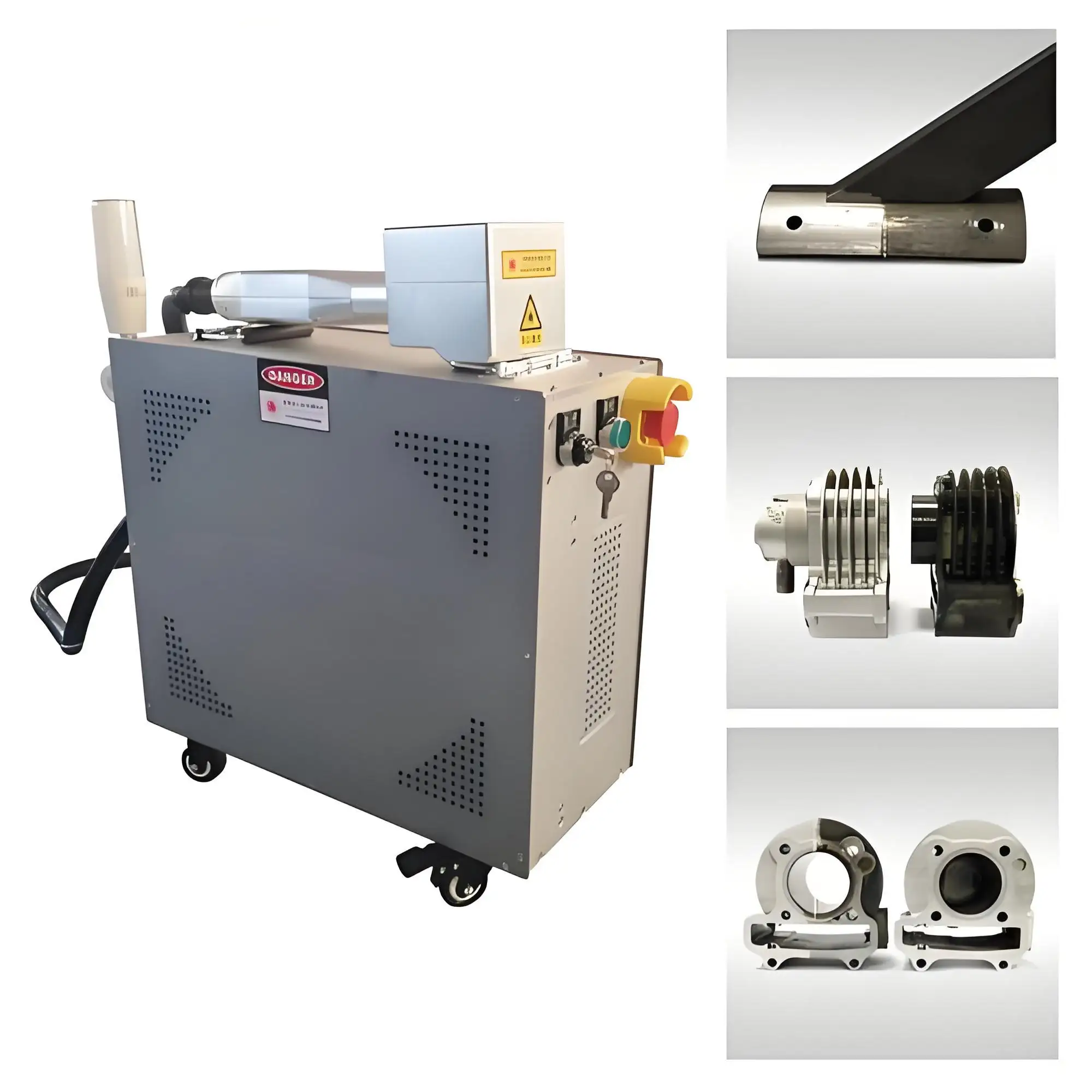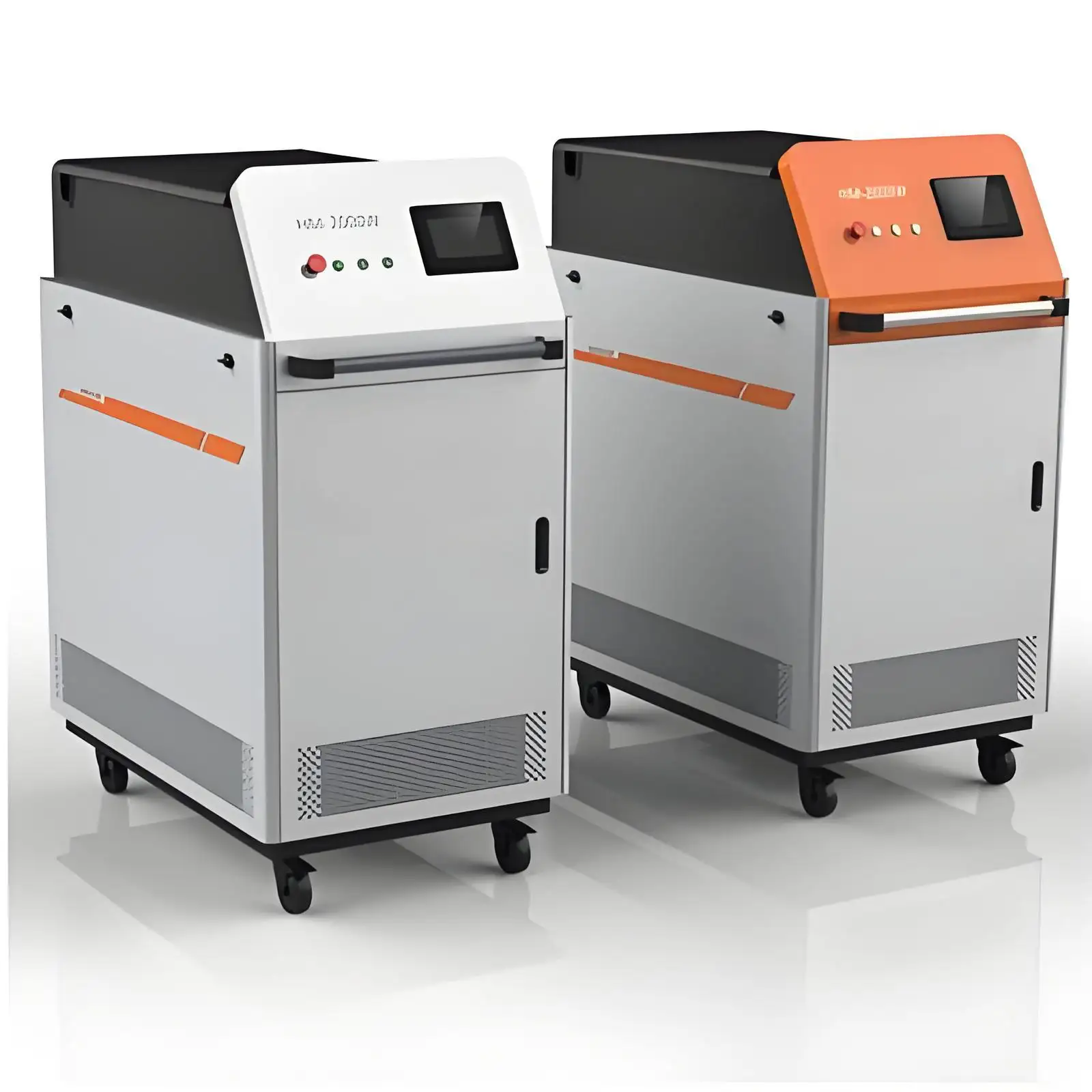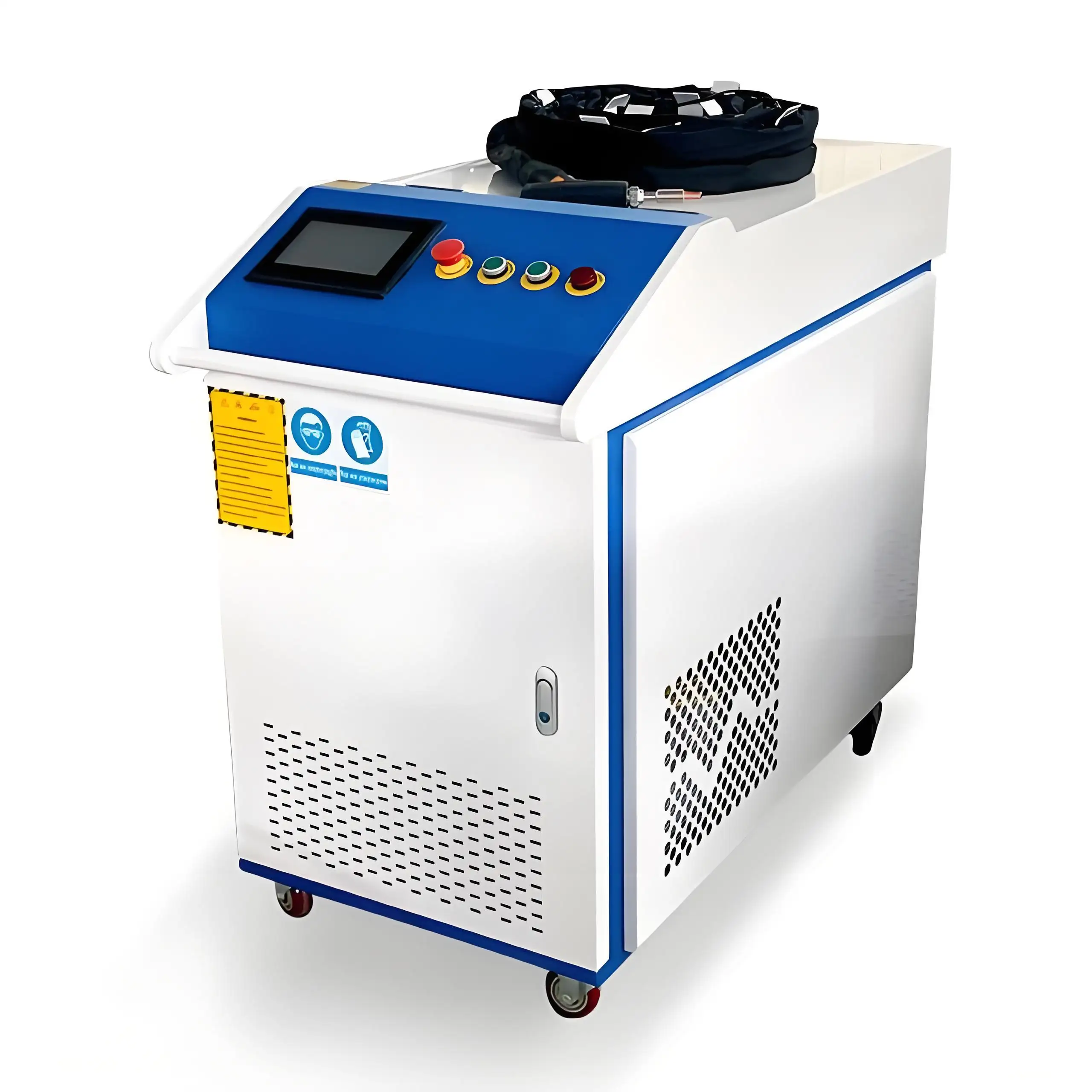Having worked in the industrial cleaning and maintenance sector for over a decade, I’ve had the chance to tinker with a wide range of equipment, from sandblasters to high-tech laser rust removal machines. These laser systems have become a game-changer for removing rust, paint, and grime without the mess of traditional methods. But one question I hear often from clients and colleagues alike is whether these machines demand frequent part replacements to keep them running smoothly. If you’re wondering about the maintenance demands of laser rust removal machines and how to keep costs down, I’m here to share my insights based on years of hands-on experience.

What Makes Laser Rust Removal Machines Different?
Laser rust removal machines use focused laser beams to vaporize rust and contaminants from metal surfaces. Unlike abrasive methods like sandblasting, they’re non-contact, precise, and environmentally friendly—no chemicals or media to dispose of. But their high-tech nature often leads people to assume they’re high-maintenance, with parts that need constant swapping out. In my experience, that’s not entirely true, but it depends on the machine, how you use it, and how well you maintain it.
The reality is, these machines are built for durability, especially in industrial settings where downtime is costly. However, certain components can wear out, and understanding which ones and why is key to keeping your machine humming along without breaking the bank. Let’s break it down.
Key Components of Laser Rust Removal Machines
To understand part replacement needs, you first need to know the critical components of a laser rust removal machine. Based on my time working with brands like CleanLASE, P-Laser, and Laserax, here’s what I’ve learned about the main parts:
Laser Source: The heart of the machine, generating the laser beam. Common types include fiber lasers, which are known for longevity.
Optical System: Includes lenses and mirrors that focus and direct the laser. These are prone to contamination if not properly maintained.
Cooling System: Air or water-based systems that prevent overheating. Fans, pumps, or coolant reservoirs are part of this.
Handheld Gun or Scanner: The delivery system for the laser beam, often with a focusing lens that can wear out over time.
Control Unit: The electronics and software that manage power, pulse frequency, and other settings.
Each of these components has different lifespans and maintenance needs, which I’ll cover as we go through the factors affecting part replacements.
Do Parts Need Frequent Replacement?
In my experience, laser rust removal machines don’t require frequent part replacements if you use them correctly and maintain them well. Unlike mechanical tools that rely on physical abrasion, laser systems have fewer moving parts, which reduces wear and tear. However, certain components are more likely to need attention depending on usage, environment, and maintenance practices. Let’s dive into the factors that influence replacement frequency and how to minimize it.

1. Usage Intensity and Duty Cycle
How often and how intensely you use the machine plays a big role. In my work with industrial clients, I’ve seen machines running 8–12 hours a day in heavy-duty settings like shipyards or automotive factories. These high-duty-cycle environments stress components like the laser source and optics more than lighter use, say, in a small workshop.
Laser Source: Fiber laser sources, common in brands like CleanLASE, are rated for 50,000–100,000 hours of operation. At 8 hours a day, that’s 10–20 years of use. I’ve rarely seen a laser source fail unless it was misused or exposed to extreme conditions.
Optics: The focusing lens in the handheld gun or scanner is more vulnerable, especially in dusty environments. I’ve replaced lenses every 6–12 months in high-use settings, but with proper care, they can last longer.
Cooling System: Fans or pumps in water-cooled systems may need replacement every 2–5 years if run continuously. I once worked on a machine where a clogged coolant filter caused overheating, but regular checks caught it early.
2. Environmental Conditions
The environment where you operate the machine matters. Dusty or humid conditions can accelerate wear on sensitive components. In one factory I consulted for, we had issues with lens contamination because the machine was used near a sandblasting area. Moving it to a cleaner space and adding a dust cover slashed maintenance needs.
Optics Protection: Use protective covers or air-purge systems to shield lenses from dust and debris. I recommend cleaning the lens daily with a microfiber cloth and approved cleaning solution.
Cooling System Maintenance: In humid environments, check water-cooled systems for corrosion or algae buildup. I’ve seen reservoirs last years with proper coolant additives.
3. Maintenance Practices
Good maintenance is the biggest factor in reducing part replacements. I’ve worked with clients who neglected basic upkeep and paid the price with frequent repairs, while others kept their machines running for years with minimal issues. Here’s what I do to keep machines in top shape:
Daily Cleaning: Wipe down the optics and exterior to remove dust or residue. A clean machine is a happy machine.
Regular Inspections: Check the cooling system, cables, and optics monthly for signs of wear. I caught a frayed cable on a Laserax unit during a routine check, preventing a costly failure.
Calibration: Ensure the laser beam is properly aligned. Misalignment can strain the optics, leading to premature wear. Most modern machines have self-calibration features, but manual checks every 6 months are a good habit.
Coolant Maintenance: For water-cooled systems, replace coolant every 6–12 months and clean reservoirs to prevent clogs.

4. Operator Training
Untrained operators can unintentionally stress the machine. I’ve seen cases where workers cranked the laser power to maximum for light rust, overheating the optics. Proper training is critical:
Teach operators to use the lowest effective power setting for the job. For example, light rust removal might only need 50–100W, not 500W.
Train them to recognize warning signs, like unusual noises from the cooling system or error codes on the control unit.
Emphasize proper handling of the handheld gun to avoid dropping or banging it, which can damage the lens.
In one workshop, we reduced lens replacements by 50% after a single training session focused on proper power settings and handling.
Components That May Need Replacement
While laser rust removal machines are built to last, some parts are more likely to need replacing than others. Here’s a breakdown based on my experience:
|
Component |
Typical Lifespan |
Replacement Frequency |
Maintenance Tips |
|---|---|---|---|
|
Focusing Lens |
6 months–2 years |
Every 6–12 months (high use) |
Clean daily, use air-purge systems |
|
Cooling Fan/Pump |
2–5 years |
Every 2–5 years |
Check for dust, lubricate as needed |
|
Coolant |
6–12 months |
Every 6–12 months |
Use manufacturer-approved coolant |
|
Laser Source |
50,000–100,000 hours |
Rarely (10–20 years) |
Avoid overuse at max power |
Focusing Lens: The most commonly replaced part due to dust or residue buildup. I’ve found that using a compressed air system to blow debris away during operation can double the lens lifespan.
Cooling Fan/Pump: These wear out faster in dusty or high-temperature environments. Regular cleaning extends their life.
Coolant: In water-cooled systems, coolant degrades over time. I replace it every 6 months in heavy-use machines to prevent corrosion.
Laser Source: Rarely needs replacement unless the machine is misused. I’ve only seen one fail in my career, and it was due to a power surge.

Brand-Specific Insights
Different brands have different maintenance profiles. Here’s what I’ve observed with some popular laser rust removal machines:
CleanLASE: Known for robust laser sources (up to 100,000 hours) and user-friendly maintenance. Lenses are easy to replace, but their cooling fans need checking every 6 months in dusty environments. I’ve used their 500W model in a shipyard, and it’s still going strong after 3 years with minimal part swaps.
P-Laser: Offers modular designs, making part replacements like lenses or pumps straightforward. Their air-cooled systems are low-maintenance but less effective for high-power units (500W+). I recommend their water-cooled models for heavy use.
Laserax: Built for industrial durability, with excellent cooling systems. However, their optics are pricier to replace, so invest in protective covers. I worked with a 1,000W Laserax unit that ran 10 hours daily for 4 years with only one lens replacement.
SFX Laser: A budget-friendly option with decent durability. Their cooling systems are less robust, so I check fans monthly. Good for smaller operations but not ideal for 24/7 use.
Cost Considerations
Part replacements can add up, but they’re generally a small fraction of the machine’s cost. For example, a focusing lens might cost $100–$500, depending on the brand, while a cooling pump runs $200–$1,000. Compare that to a $10,000–$50,000 machine, and it’s clear that proper maintenance is more cost-effective than neglecting it. In one factory I consulted for, we saved thousands by extending lens life through daily cleaning and air-purge systems.
If you’re on a tight budget, opt for brands like SFX or P-Laser, which offer affordable replacement parts. For high-end durability, CleanLASE or Laserax are worth the investment if you can afford the upfront cost.
Real-World Lessons
One of my most memorable experiences was helping a client with a CleanLASE 500W machine in a marine repair shop. They were replacing lenses every 3 months because of salty, dusty air. After installing an air-purge system and training the team to clean the lens daily, we stretched the lens lifespan to over a year. The client saved thousands in parts and downtime, and the machine’s still running 5 years later.
Another time, a workshop using a P-Laser unit had cooling issues because they skipped coolant changes. A quick flush and refill fixed the problem, and we set up a maintenance schedule to prevent a repeat. These experiences taught me that proactive care is the key to minimizing replacements.
Tips to Minimize Part Replacements
Here’s my go-to checklist for keeping your laser rust removal machine in top shape and reducing part replacements:
Clean Optics Daily: Use a microfiber cloth and approved cleaner to remove dust or residue. This can extend lens life by months.
Use Protective Systems: Air-purge or dust covers are a small investment for big savings on optics.
Monitor Cooling Systems: Check fans, pumps, and coolant levels monthly. Clean or replace filters as needed.
Train Operators: Ensure your team knows how to use the machine correctly and recognize warning signs.
Schedule Professional Maintenance: Have a technician inspect the machine annually to catch issues early.

Why It’s Worth the Effort
Laser rust removal machines are a significant investment, but they’re built to last with minimal part replacements if you treat them right. By choosing a reliable brand, maintaining the machine diligently, and training your team, you can keep it running for years with only occasional part swaps. In my work, I’ve seen well-maintained machines operate flawlessly for a decade, saving businesses thousands compared to traditional rust removal methods.
Whether you’re in a small workshop or a large industrial facility, the key is to prioritize maintenance, training, and proper use. It’s not just about avoiding part replacements—it’s about ensuring your machine delivers consistent results without unexpected downtime.
Related Questions and Answers
Q: How often should I clean the optics on a laser rust removal machine?
A: Daily cleaning with a microfiber cloth and approved solution is ideal, especially in dusty environments. It can significantly extend the lens lifespan.
Q: Are budget laser rust removal machines reliable for long-term use?
A: Brands like SFX offer decent reliability for smaller operations, but their cooling systems and optics may need more frequent attention. For heavy use, invest in CleanLASE or Laserax.
Q: Can I replace parts myself, or do I need a technician?
A: Lenses and coolant are often user-replaceable with basic training—check the manual. For complex parts like pumps or electronics, I recommend a certified technician to avoid damage.
Q: What’s the most common part to replace?
A: The focusing lens, due to dust or residue buildup. With proper cleaning and protective systems, you can stretch its life to 1–2 years even in high-use settings.






